by Dave Maier
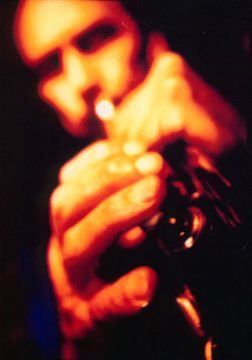 Last time I posted a mix of Jon Hassell’s music, a little under his own name and a lot of collaborations. This time we’ll look at (my take on) Jon’s influence on others; but we’ll hear a bit more from Jon himself as well.
Last time I posted a mix of Jon Hassell’s music, a little under his own name and a lot of collaborations. This time we’ll look at (my take on) Jon’s influence on others; but we’ll hear a bit more from Jon himself as well.
Before we start, let me remind you (one reason) why we’re doing this: Jon is ill and needs your help. Here is the gofundme link; as you can see, there’s quite a ways to go: https://www.gofundme.com/f/jon-hassell-fund
Also, some good news: Jon has a new album for us! It’s available for pre-order now and will drop on July 24.
At that link, interestingly, we find stated flat out what I’ve taken for granted in making this second mix:
“The impact of Jon Hassell on today’s generation of electronic and ambient artists is immeasurable” – Paste Magazine
How exactly Jon has influenced his devotees naturally varies but we can identify a few main features of his music which people picked up on. First, perhaps most obviously, is his use of pitch shifters or “harmonizers,” especially Eventide’s high-end rack-mount effects unit of that name, which allows even a monophonic instrument such as a trumpet to play multiple parallel melodies simultaneously.
In this set we hear guitars and voices echoing Jon’s adaptation of sinuous melodic lines to the chordal possibilities of the harmonizer (or, in at least one case, of the recording studio). Secondly, trumpeters in particular have continued the evolution of the timbral possibilities of their chosen horn. In Jon’s own playing we hear not only the voice of his teacher Pandit Pran Nath, but also the great trumpeters of the jazz tradition, especially Miles Davis and Chet Baker, whose breathy, hushed tones take on a particularly exotic shade in the Fourth World context. In this set we hear three trumpeters paying homage but also taking the next step. Finally, Jon’s 1990 album City: Works of Fiction, from which our opening track “Rain” is taken, was especially influential in the world of progressive jazz fusion, its futuristic timbres and reverberant spaces giving the genre a push into the rapidly oncoming new millenium. So naturally we’ll hear some of that too.
direct link: https://www.mixcloud.com/duckrabbit/jon-hassell-tribute-pt-2-jons-influence/
Jon Hassell – Rain / City: Works of Fiction
Michael Brook – Hybrid / s/t
Nils Petter Molvaer – Song of Sand 2 / Khmer
Kenneth Newby – Sirens i / Sirens
Erik Truffaz/Murcof – Warhole / Being Human Being
Paul Schütze – The Mutant Beautific / New Maps of Hell
Richard Horowitz & Sussan Deyhim – Majoun / s/t
Arve Henriksen – Migration / Cartography
Jon Hassell – Blue Period / Last Night the Moon Came Dropping its Clothes in the Street
1. Jon Hassell – Rain / City: Works of Fiction
 Here is Jon’s suggested “fiction” for this track:
Here is Jon’s suggested “fiction” for this track:
RAIN The wind changes the beat. Water blows around the corner and down the block. It’s backed up. Foreign cars with horns in minor keys. Hear the phone wires bang and echo like a cheap cave. The wind is playing with fire.
Jon Hassell—trumpet, keyboards
Gregg Arreguin—guitar
Jeff Rona—keyboards, sampled percussion
Adam Rudolph—acoustic and sampled percussion
Daniel Schwartz—bass
2. Michael Brook – Hybrid / s/t
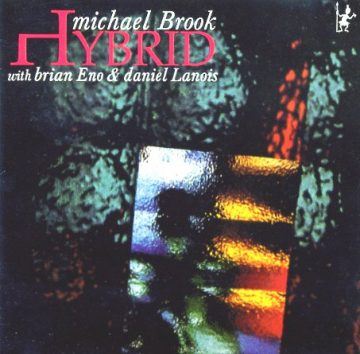 In addition to engineering Jon’s first record Vernal Equinox in 1977, Michael Brook was a member of Jon’s ensemble in the mid-1980s and appears on Power Spot and The Surgeon of the Nightsky Restores Dead Things by the Power of Sound. On this release, Brook adapts Jon’s soloing techniques to his own “infinite guitar” – indeed, rumor has it that this track in particular struck Jon himself as being a bit, shall we say, familiar-sounding (don’t quote me on that though). Be that as it may, it strikes me as a fine homage and an effective piece of music in its own right.
In addition to engineering Jon’s first record Vernal Equinox in 1977, Michael Brook was a member of Jon’s ensemble in the mid-1980s and appears on Power Spot and The Surgeon of the Nightsky Restores Dead Things by the Power of Sound. On this release, Brook adapts Jon’s soloing techniques to his own “infinite guitar” – indeed, rumor has it that this track in particular struck Jon himself as being a bit, shall we say, familiar-sounding (don’t quote me on that though). Be that as it may, it strikes me as a fine homage and an effective piece of music in its own right.
daniel Lanois – percussion, treatments
brian Eno – treatments
michael Brook – infinite guitar, bass, percussion, mix
Opal/EG 1985
3. Nils Petter Molvaer – Song of Sand 2 / Khmer
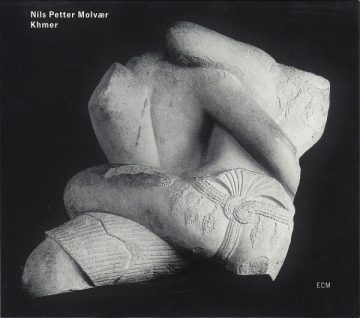 This Norwegian trumpeter has quite a few records out, sometimes but not always mining much the same vein as more recent Hassell, especially in the use of samples, but also employing some of the same talent (here guitarist Eivind Aarset, whom we’ll hear again later more than once, both with Jon and without).
This Norwegian trumpeter has quite a few records out, sometimes but not always mining much the same vein as more recent Hassell, especially in the use of samples, but also employing some of the same talent (here guitarist Eivind Aarset, whom we’ll hear again later more than once, both with Jon and without).
Nils Petter Molvær: trumpet, bass, samples, guitar
Eivind Aarset: guitar
Rune Arnesen: drums
Ulf W. Ø. Holand: samples
ECM Records, 1997
4. Kenneth Newby – Sirens i / Sirens
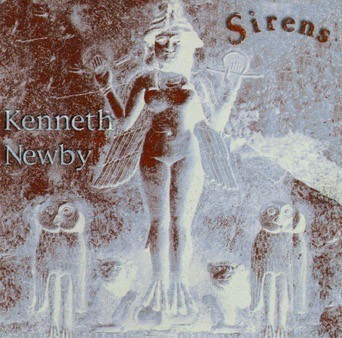 Twenty years back, the City of Tribes label put out quite a bit of what some people called “world fusion,” which is as good a name as any. I mean no disrespect when I note that at times it took just as much from new age music as from progressive or fusion, as a lot of excellent music was tagged with the former unfortunate label. Jon is not mentioned specifically in the liner notes as an influence (as are Claude Debussy, Morton Feldman, and Henri Bergson), so maybe it’s just me, but in any case this track rocks (turn it up loud).
Twenty years back, the City of Tribes label put out quite a bit of what some people called “world fusion,” which is as good a name as any. I mean no disrespect when I note that at times it took just as much from new age music as from progressive or fusion, as a lot of excellent music was tagged with the former unfortunate label. Jon is not mentioned specifically in the liner notes as an influence (as are Claude Debussy, Morton Feldman, and Henri Bergson), so maybe it’s just me, but in any case this track rocks (turn it up loud).
“She is known as the Lady, as Suchness, as Void, as Perfection of Wisdom, as limit of Reality, as Absence of Self.”
DB Boyko – voice
Patti Clemens – voice
Chris Miller – rebab
Kenneth Newby – suling, piri, percussion, sound design
City of Tribes, 1997
5. Erik Truffaz/Murcof – Warhole / Being Human Being
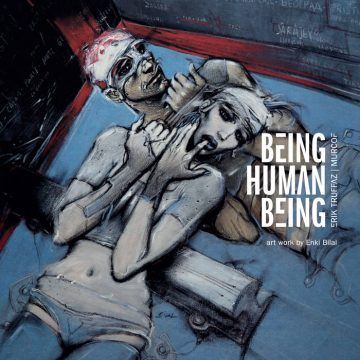 French trumpeter Erik Truffaz is perhaps not the first name one thinks of when considering Jon’s influence on trumpeters in particular; but I stumbled across this collaboration with post-techno electronic producer Murcof when I was checking him out, and this album struck me as a prime example of the lasting reverberations of Jon’s influence on progressive fusion in particular, for which stay tuned for our next track as well. The digital download tells me no more than does the Bandcamp page about who’s doing what, but my guess is that Erik plays the trumpet and Murcof does everything else.
French trumpeter Erik Truffaz is perhaps not the first name one thinks of when considering Jon’s influence on trumpeters in particular; but I stumbled across this collaboration with post-techno electronic producer Murcof when I was checking him out, and this album struck me as a prime example of the lasting reverberations of Jon’s influence on progressive fusion in particular, for which stay tuned for our next track as well. The digital download tells me no more than does the Bandcamp page about who’s doing what, but my guess is that Erik plays the trumpet and Murcof does everything else.
6. Paul Schütze – The Mutant Beautific / New Maps of Hell
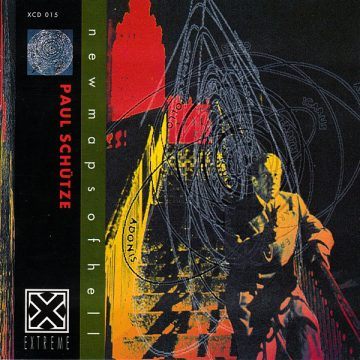 There’s no trumpet, harmonized or otherwise, on this track, but to my ear Aussie electronic musician Paul Schütze’s many releases from the 1990s show him to win the prize of “most likely to have worn out several copies of Jon Hassell’s 1990 record City: Works of Fiction” (if you can wear out CDs that is). From this aptly named release we hear an appropriately terrifying track.
There’s no trumpet, harmonized or otherwise, on this track, but to my ear Aussie electronic musician Paul Schütze’s many releases from the 1990s show him to win the prize of “most likely to have worn out several copies of Jon Hassell’s 1990 record City: Works of Fiction” (if you can wear out CDs that is). From this aptly named release we hear an appropriately terrifying track.
Album credits:
Simone de Haan – Trombone
Mark Stafford – Guitars
Bill McDonald – Bass
François Tétaz – Percussion
Peter Jones – Drums
Peter Neville – Percussion
Paul Schütze – Keyboards & Percussion
Extreme Records, 1992
7. Richard Horowitz & Sussan Deyhim – Majoun / s/t
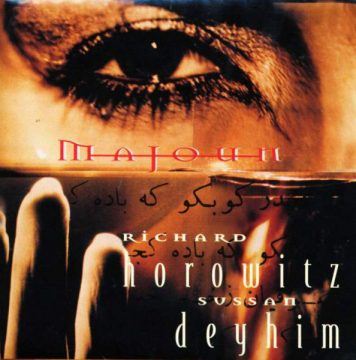 Keyboardist Richard Horowitz is another alumnus of Jon’s ensemble, appearing on the same records as does Michael Brook. This is his second release with Iranian singer Deyhim, showing another exciting take on Jon’s “Fourth World” aesthetic, here giving off a distinctly North African vibe.
Keyboardist Richard Horowitz is another alumnus of Jon’s ensemble, appearing on the same records as does Michael Brook. This is his second release with Iranian singer Deyhim, showing another exciting take on Jon’s “Fourth World” aesthetic, here giving off a distinctly North African vibe.
MAJOUN [means] “potion” or, in some cases, “love potion” in Arabic and Farsi. In Morocco there is a tantalizing majoun made from various spices, nuts, dates, honey and kif, which is simmered over a low flame until it forms a thick paste, and served with mint tea.
This music is quite warm and seems to work best while the sun goes down in hot climates; in the northern hemisphere it doesn’t seem to be as time specific but after dark the music becomes the MAJOUN.
In answer to a frequently asked question: there are no harmonizers or other vocal doubling effects used on Sussan’s voice. There is complex sampling from time to time. The track “Majoun” is all vocal samples except for the finger cymbals and calabash percussion which were smeared through a [Lexicon] PCM 80 [a high-end digital effects unit] and heated over a low flame …
Sussan Deyhim, vocals
Richard Horowitz, keyboards and vocaboards
Steve Shehan, calabash and finger cymbals
8. Arve Henriksen – Migration / Cartography
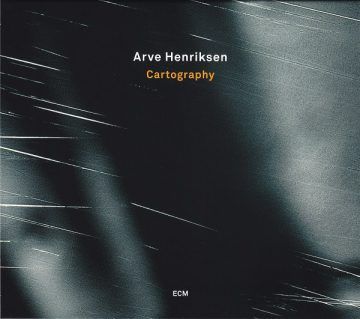 Another Norwegian, trumpeter Henriksen comes closest among our trumpeters to Jon’s actual sound. It can even, on some tracks, be not obvious at first which of them we’re listening to, but with repeated exposure I hear Arve as a bit breathier and/or trebly. Another natural comparison is the Nils Petter Molvær disc we heard earlier (same instrument, same country, same label, same guitarist), but this track has much more of a dreamy ambient feel.
Another Norwegian, trumpeter Henriksen comes closest among our trumpeters to Jon’s actual sound. It can even, on some tracks, be not obvious at first which of them we’re listening to, but with repeated exposure I hear Arve as a bit breathier and/or trebly. Another natural comparison is the Nils Petter Molvær disc we heard earlier (same instrument, same country, same label, same guitarist), but this track has much more of a dreamy ambient feel.
Arve Henriksen: trumpet
Jan Bang: samples, beats, programming
Eivind Aarset: guitars
Lars Danielsson: double-bass
Erik Honoré: synthesizer, samples
Samples provided by Steve Jansen
ECM Records 2008
9. Jon Hassell – Blue Period / Last Night the Moon Came Dropping its Clothes in the Street
 We finish with another track from the master himself, continuing the hushed ambient vibe of the Henriksen number.
We finish with another track from the master himself, continuing the hushed ambient vibe of the Henriksen number.
from the notes:
In memoriam
Hector Zazou – with an inner smile, remembering my dear friend in life and music.
Gil Evans – our hero. The spirit, the sound, woven into everything.
Contributions:
Eivind Aarset’s beautiful loop in “Blue Period”.
“Blue Period” is a remix of “Amsterdam Blue” that first appeared in a soundtrack to Wim Wenders’ film “The Million Dollar Hotel”.
Jon Hassell trumpet
Peter Freeman bass, samples
Eivind Aarset guitar loop
Jan Bang live sampling
Rick Cox guitar
Jamie Muhoberac keyboards, drums
Steve Shehan percussion
ECM Records, 2009
Enjoy!
